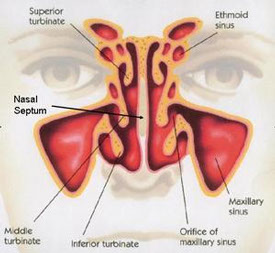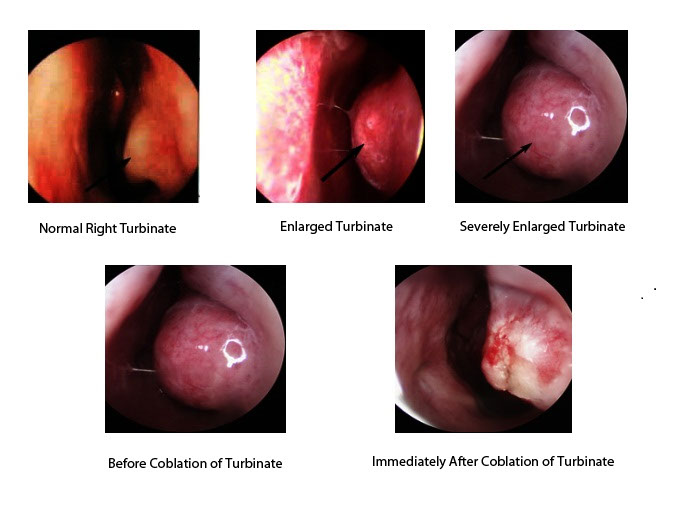In-office Radiofrequency Turbinate Reduction
Nasal turbinates are small, shelf-like structures composed of thin bone and covered by mucous membranes. They protrude into the nasal airway act as heat and moisture exchangers for the air we breathe. The inferior turbinates are the largest of the turbinates, and have the biggest impact on nasal airflow. Turbinates can enlarge due to several factors including allergies and chronic inflammation. This can lead to chronic nasal congestion, impairing normal breathing and resulting in a negative impact on quality of life. Treatment of enlarged turbinates is initiated with a trial of nasal steroid sprays with or without antihistamines. If these treatments are not effective, then shrinking the turbinates can offer significant improvement in symptoms of nasal obstruction.


The specific technique used for turbinate reduction depends on several factors, including coexisting conditions requiring more extensive surgery, such as a deviated nasal septum and sinus disease. If enlarged turbinates are the only problem, then an outpatient procedure in the office can be considered with submucosal ablation of the soft tissue within the turbinates (Radiofrequency Submucosal Turbinate Ablation). The procedure involves anesthetizing the nose with topical and injected agents. Then a radiofrequency probe is gently inserted into the soft tissue substance of the turbinates. Using radiofrequency current, the probe causes thermal ablation of the soft tissues leading to shrinkage of the turbinate over time and resulting in improved nasal airway flow. The effects from the procedure are not fully realized until 7-10 days later.

